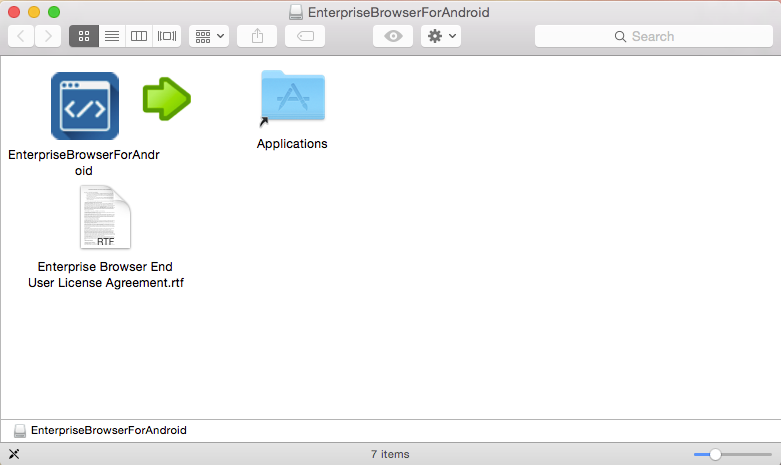Mac Install Dmg To Sd
Latest Version:
Etcher 1.5.79 LATEST
Requirements:
Mac OS X 10.9 or later
Author / Product:
Balena / Etcher for Mac
Old Versions:
Filename:
balenaEtcher-1.5.79.dmg
Details:
Etcher for Mac 2020 full offline installer setup for Mac
Hey guys, I have already ordered Leopard, but I was wondering how do you install leopard from a.DMG (Like the files the ADC members download) with out burning a DVD? Do you make a new partition or something? I am so confused how this is done, and would really appreciate if someone. Jan 17, 2019 About the SD and SDXC card slot on your Mac Some Mac computers feature an SD (Secure Digital) or SDXC (Secure Digital Extended Capacity) card slot that lets your Mac read and write data to SD media, such as digital camera memory cards.
Jan 11, 2018 And yes, the flashed SD card will be bootable if the starting image is intended to be, like for a RaspberryPi. How to Write.img Files to SD Cards on Mac with Etcher. You can write an.img file (or other disk image) to an SD card with Etcher in a few simple steps: Get Etcher from the developer free here.
Features and Highlights
Validated Burning
No more writing images on corrupted cards and wondering why your device isn't booting.
Hard Drive Friendly
Makes drive selection obvious to avoid wiping your entire hard-drive.
Beautiful Interface
Who said burning SD cards has to be an eyesore.
Open Source
Made with JS, HTML, node.js and Electron. Dive in and contribute!
Cross Platform
Works for everyone, no more complicated install instructions.
More on the way
50% faster burns, simultaneous writing for multiple drives.
Also Available: Download Etcher for Windows
Reinstall from macOS Recovery
macOS Recovery makes it easy to reinstall the Mac operating system, even if you need to erase your startup disk first. All you need is a connection to the Internet. If a wireless network is available, you can choose it from the Wi-Fi menu in the menu bar. This menu is also available in macOS Recovery.

1. Start up from macOS Recovery
To start up from macOS Recovery, turn on your Mac and immediately press and hold one of the following combinations on your keyboard. Release the keys when you see an Apple logo, spinning globe, or other startup screen.
Command (⌘)-R
Reinstall the latest macOS that was installed on your Mac (recommended).
Option-⌘-R
Upgrade to the latest macOS that is compatible with your Mac.
Shift-Option-⌘-R
Reinstall the macOS that came with your Mac, or the closest version still available.
You might be prompted to enter a password, such as a firmware password or the password of a user who is an administrator of this Mac. Enter the requested password to continue.
When you see the utilities window, you have started up from macOS Recovery.
2. Decide whether to erase (format) your disk
You probably don't need to erase, unless you're selling, trading in, or giving away your Mac, or you have an issue that requires you to erase. If you need to erase before installing macOS, select Disk Utility from the Utilities window, then click Continue. Learn more about when and how to erase.
3. Install macOS

When you're ready to reinstall macOS, choose Reinstall macOS from the Utilities window. Then click Continue and follow the onscreen instructions. You will be asked to choose a disk on which to install.
- If the installer asks to unlock your disk, enter the password you use to log in to your Mac.
- If the installer doesn't see your disk, or it says that it can't install on your computer or volume, you might need to erase your disk first.
- If the installer is for a different version of macOS than you expected, learn about macOS Recovery exceptions.
Please allow installation to complete without putting your Mac to sleep or closing its lid. During installation, your Mac might restart and show a progress bar several times, and the screen might be empty for minutes at a time.
If your Mac restarts to a setup assistant, but you're selling it, trading it in, or giving it away, press Command-Q to quit the assistant without completing setup. Then click Shut Down. When the new owner starts up the Mac, they can use their own information to complete setup.
Mac Install Dmg To Sd Converter
macOS Recovery exceptions
The version of macOS offered by macOS Recovery might differ in certain circumstances:
- If macOS Sierra 10.12.4 or later has never been installed on this Mac, Option-Command-R installs the macOS that came with your Mac, or the closest version still available. And Shift-Option-Command-R isn't available.
- If you erased your entire disk instead of just the startup volume on that disk, macOS Recovery might offer only the macOS that came with your Mac, or the closest version still available. You can upgrade to a later version afterward.
- If your Mac has the Apple T2 Security Chip and you never installed a macOS update, Option-Command-R installs the latest macOS that was installed on your Mac.
- If you just had your Mac logic board replaced during a repair, macOS Recovery might offer only the latest macOS that is compatible with your Mac.

If you can't get macOS Recovery to offer the installer you want, you might be able to use one of the other ways to install macOS.
Other ways to install macOS
Mac Install Dmg From Terminal
- You can also install macOS from the App Store or Software Update preferences. If you can't install macOS Catalina, you might be able to install an earlier macOS, such as macOS Mojave, High Sierra, Sierra, El Capitan, or Yosemite.
- Or create a bootable installer disk, then use that disk to install macOS on your Mac or another Mac.